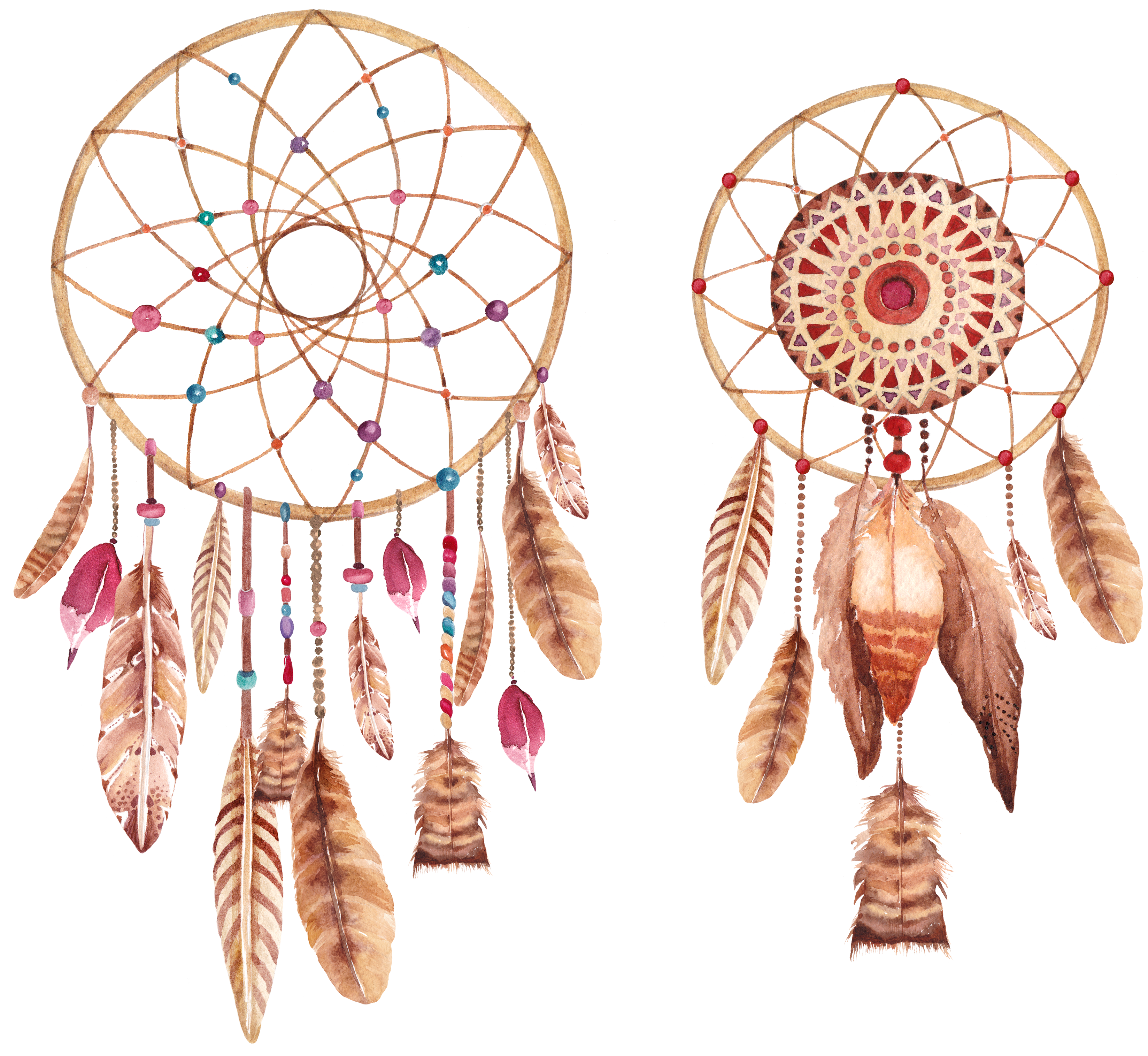
This image has format transparent PNG with resolution 3295x3030.
You can download this image in best resolution from this page and use it for design and web design.
Dreamcatcher PNG with transparent background you can download for free, just click on download button.
In some Native American and First Nations cultures, a dreamcatcher or dream catcher (Ojibwe: asabikeshiinh, the inanimate form of the Anishinaabemowin word for "spider") is a handmade willow hoop, on which is woven a net or web. The dreamcatcher may also include sacred items such as certain feathers or beads. Traditionally they are hung over a cradle or bed as protection. The dreamcatcher originates in Anishinaabe culture as the "spider web charm" - Anishinaabemowin: asubakacin "net-like" (White Earth Nation); bwaajige ngwaagan "dream snare" (Curve Lake First Nation) - a hoop with woven string or sinew meant to replicate a spider's web, used as a protective charm for infants.
Dreamcatchers were adopted in the Pan-Indian Movement of the 1960s and 1970s and gained popularity as a widely marketed "Native crafts items" in the 1980s.
While Dreamcatchers continue to be used in a traditional manner in their communities and cultures of origin, a derivative form of "dreamcatchers" were also adopted into the Pan-Indian Movement of the 1960s and 1970s as a symbol of unity among the various Native American cultures, or a general symbol of identification with Native American or First Nations cultures.
The name "dream catcher" was published in mainstream, non-Native media in the 1970s and became widely known as a "Native crafts item" by the 1980s, by the early 1990s "one of the most popular and marketable" ones.
In the course of becoming popular outside the Ojibwe Nation, and then outside the pan-Indian communities, various types of "dreamcatchers", many of which bear little resemblance to traditional styles, and that incorporate materials that would not be traditionally used, are now made, exhibited, and sold by New age groups and individuals. While some people see this popularization as harmless, many Native Americans have come to see these imitation "dreamcatchers" as over-commercialized, offensively misappropriated and misused by non-Natives.
A mounted and framed dreamcatcher is being used as a shared symbol of hope and healing by the Little Thunderbirds Drum and Dance Troupe from the Red Lake Indian Reservation in Minnesota. In recognition of the shared trauma and loss experienced, both at their school during the Red Lake shootings, and by other students who have survived similar school shootings, they have traveled to other schools to meet with students, share songs and stories, and gift them with the dreamcatcher. The dreamcatcher has now been passed from Red Lake to students at Columbine CO, to Sandy Hook CT, to Marysville WA, to Townville SC, to Parkland FL.
In this page you can download free PNG images: Dreamcatcher PNG images free download